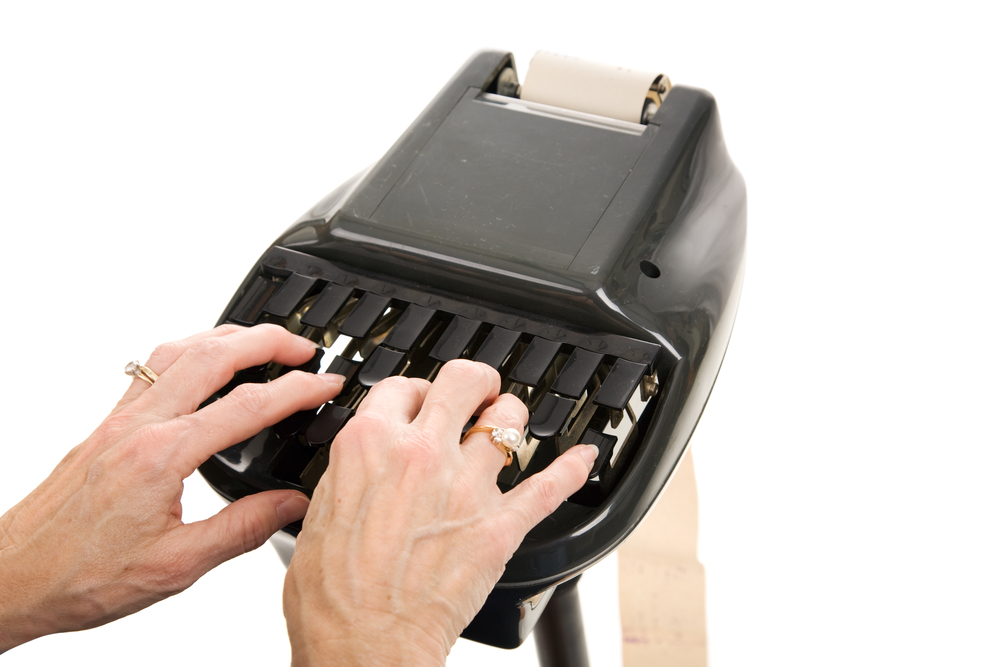
In the Moment: Understanding How Real-Time Court Reporting Works
June 5, 2024 8:07 pm Leave your thoughtsReal-time court reporting is a critical component of the legal system, providing accurate and immediate transcripts of court proceedings. This technology enables attorneys, judges, and other participants to access a verbatim record of the proceedings in real-time, enhancing communication, facilitating decision-making, and ensuring transparency in the legal process. But how does real-time court reporting work, and what are the techniques involved in live court reporting? Let’s delve into the intricacies of this essential service and explore the process behind real-time transcription in court.
How Does Real-Time Court Reporting Work?
Real-time court reporting utilizes specialized stenographic equipment and software to transcribe spoken words into written text with remarkable speed and accuracy. Highly trained court reporters, known as stenographers, use a stenotype machine—a compact keyboard with fewer keys than a standard keyboard—to capture spoken words phonetically using a combination of key strokes. These keystrokes represent syllables, sounds, or entire words, allowing stenographers to transcribe speech at speeds of up to 225 words per minute or more.
As the stenographer inputs text into the stenotype machine, specialized software translates the keystrokes into readable text in real-time. This text is then displayed on a monitor or projected onto a screen for participants in the courtroom to view. Additionally, real-time transcripts can be streamed remotely over the internet, allowing attorneys, clients, and other stakeholders to follow the proceedings from anywhere in the world.
Real-Time Court Reporting Process
The process of real-time court reporting begins with the stenographer setting up their equipment in the courtroom and connecting it to the real-time transcription software. Once the proceedings commence, the stenographer listens carefully to the spoken words and transcribes them phonetically using the stenotype machine. The stenographer’s keystrokes are converted into English text by the real-time transcription software and displayed on a screen in real-time.
Throughout the proceedings, the stenographer continually refines and edits the transcript to ensure accuracy and readability. This may involve correcting mistranslations, adding punctuation, and formatting the text for clarity. The real-time transcript is updated continuously as the proceedings unfold, providing an up-to-the-minute record of the court’s proceedings.
Real-Time Transcription in Court
Real-time transcription in court offers numerous benefits for participants in the legal process. Attorneys can use real-time transcripts to review testimony, prepare cross-examinations, and identify key points for argumentation. Judges can refer to real-time transcripts to clarify statements, review evidence, and make rulings. Additionally, real-time transcripts enable deaf or hard-of-hearing individuals to follow the proceedings in real-time through the use of assistive devices or captioning services.
Live Court Reporting Techniques
Achieving accurate and reliable real-time transcription in court requires specialized training and expertise. Stenographers undergo rigorous training programs to develop proficiency in stenography, typing, and transcription techniques. They must be able to type at high speeds while maintaining accuracy and attention to detail, even in fast-paced and complex legal proceedings.
In addition to technical proficiency, live court reporting techniques also involve effective communication and collaboration with other participants in the courtroom. Stenographers work closely with attorneys, judges, and support staff to ensure that the real-time transcript accurately reflects the proceedings and meets the needs of all stakeholders.
Summary
Real-time court reporting plays a vital role in the legal system, providing immediate access to accurate transcripts of court proceedings. By leveraging specialized stenographic equipment and software, highly trained stenographers are able to transcribe spoken words into written text in real-time with remarkable speed and accuracy. Real-time transcripts enhance communication, facilitate decision-making, and ensure transparency in the legal process, making them an indispensable tool for attorneys, judges, and other participants in the courtroom.
Need a Court Reporting Agency in Phoenix, AZ?
Bartelt | Nix Reporting, LLC is the oldest court reporting firm in Phoenix, Arizona. Our experience in the industry has earned us a reputation to be proud of, and we have an experienced team who is dedicated to our clientele. Serving the entirety of Arizona, and even having clients nationwide, we are able to help every case that comes our way. We offer many different services including court reporting, video conferencing, videography, and virtual depositions. We are here to record testimony and other legal proceedings in the most thorough and precise way possible. You can count on our trained and experienced legal court reporters to take care of the legal details of your case. Contact us today to learn more about what we can do for you.
Categorised in: Court Reporting
This post was written by admin
